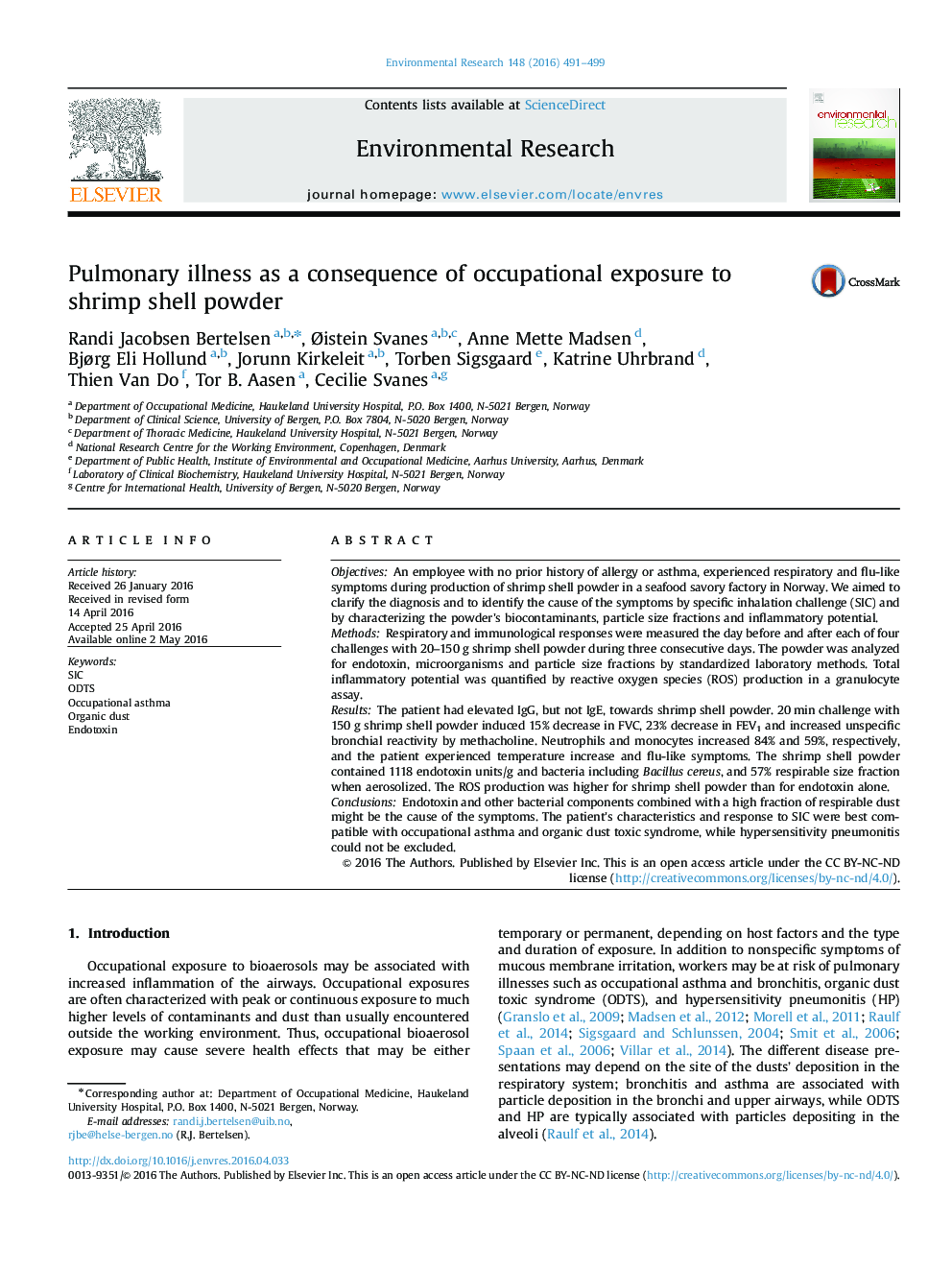| کد مقاله | کد نشریه | سال انتشار | مقاله انگلیسی | نسخه تمام متن |
|---|---|---|---|---|
| 6351545 | 1622555 | 2016 | 9 صفحه PDF | دانلود رایگان |
- Specific inhalation challenge is a useful tools in diagnosing respiratory diseases.
- Identifying biocontaminants in dust may guide diagnoses of respiratory disease.
- Shrimp shell powder contain agents that contribute to severe respiratory disease.
- Criteria for differentiating lung diseases due to organic dust should be agreed upon.
ObjectivesAn employee with no prior history of allergy or asthma, experienced respiratory and flu-like symptoms during production of shrimp shell powder in a seafood savory factory in Norway. We aimed to clarify the diagnosis and to identify the cause of the symptoms by specific inhalation challenge (SIC) and by characterizing the powder's biocontaminants, particle size fractions and inflammatory potential.MethodsRespiratory and immunological responses were measured the day before and after each of four challenges with 20-150Â g shrimp shell powder during three consecutive days. The powder was analyzed for endotoxin, microorganisms and particle size fractions by standardized laboratory methods. Total inflammatory potential was quantified by reactive oxygen species (ROS) production in a granulocyte assay.ResultsThe patient had elevated IgG, but not IgE, towards shrimp shell powder. 20Â min challenge with 150Â g shrimp shell powder induced 15% decrease in FVC, 23% decrease in FEV1 and increased unspecific bronchial reactivity by methacholine. Neutrophils and monocytes increased 84% and 59%, respectively, and the patient experienced temperature increase and flu-like symptoms. The shrimp shell powder contained 1118 endotoxin units/g and bacteria including Bacillus cereus, and 57% respirable size fraction when aerosolized. The ROS production was higher for shrimp shell powder than for endotoxin alone.ConclusionsEndotoxin and other bacterial components combined with a high fraction of respirable dust might be the cause of the symptoms. The patient's characteristics and response to SIC were best compatible with occupational asthma and organic dust toxic syndrome, while hypersensitivity pneumonitis could not be excluded.
Journal: Environmental Research - Volume 148, July 2016, Pages 491-499
